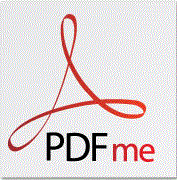masonic matters
Four Crowned Martyrs
by Ed Halpaus
Grand Lodge Education Officer
Grand Lodge of A. F. & A. M. of Minnesota
“Man’s inhumanity to man makes countless thousands mourn.” Brother Robert Burns
“Be still, be still, my soul; it is but for a season: Let us endure an hour to
see injustice done.”
A.E. Houseman (1859-1936)
“Grant we beseech thee O Almighty God, that as we have been informed of the
constancy of the glorious martyrs in the profession of Thy faith, so we may
experience their kindness in recommending to us Thy mercy.” Prayer offered on
November 8th yearly to commemorate the actions of the Four Crowned Martyrs.
Quatuor Coronati
The word Quaternion means a set of four, and it can refer to people as well as
to things or objects. The set of four can be groups of people. For instance,
that’s why there is a maximum of 40 members of the Quatuor Coronati Lodge #2076
in London, chartered by the United Grand Lodge of England.
The Quattuor Coronati means “The Four Crowned Ones.” There is a difference in
the spelling when you look in the Regius Poem: At the beginning of the part of
the poem that has to do with the Four Crowned Martyrs; in the Old English
version it is titled “ARS Quatuor Coronatorum and in the new English version
that section is titled “The Art of the Four Crowned Ones.[i]”
It is thought that the reason for the transactions of Quatuor Coronati Lodge
#2076 being titled ARS Quatuor Coronatorum is because of the spelling in the
Regius Poem rather than the Latin spelling of ‘Quattuor.’ By the way
Quattuor-Decim is Latin for Fourteen, and Quattuor-Viri Ōrum, means a commission
of four members.[ii]
It was mentioned above about the Four Crowned Ones, or the Four Crowned Martyrs,
which is an interesting story about some men who would not compromise on their
beliefs and thus were put to death. When you read about them you will find there
is more than one group of four who could be called Martyrs. The first ones I’ll
refer to were killed by the Emperor Diocletian for refusing to sculpt a statue
of a pagan god.[iii]
These four really were five men, (Claudius, Nicostratus, Symphorianus, Castor,
and Simplicius,) because the four had converted another operative mason,
(Simplicius,) from being a pagan to being a Christian, and he joined his four
friends in refusing to work on a statue of a pagan god, so the five were sealed
alive in leaden coffins and tossed into a river[iv]
to die.
There were other Operative Masons who completed the statue the five had refused
to work on, and when it was completed it was to be dedicated. It was ordered
that there be offerings of incense to the god, but four Master Masons Severus,
Severianus, Carpoforus, and Victorianus[v]who
were also Corniculari,[vi]
which means ‘Wing Leader in the City Militia,” refused to offer incense because
they were Christians. They too were executed, but the method of their execution
was to be beaten to death in front of the statue with whips weighted with leaden
balls, called a plumbata.[vii]
The significance to us as Freemasons of this Quattuor Coronati is that these two
groups of Operative Masons were and still are regarded as patron saints among
the stone-cutters and marble workers, and by extension to Masons.[viii]
However, here in the U.S., at least, these Four Crowned Martyrs have been
replaced in the ritual of Freemasonry by the Saints John.[ix]
The date of the Festival of the Four Crowned Martyrs is November 8th of each
year, since they were drowned in their leaden coffins on November 8, 298 A.D. or
in the Common Era, (C.E.) that is also the date of the meeting of Quatuor
Coronati Lodge No. 2076 which meets at Freemasons Hall in London, England each
year.
A little known fact, that should be very well known, is that any Master Mason
from a Grand Lodge Recognized by the United Grand Lodge of England can become a
member of the Quatuor Coronati Correspondence Circle, (Q.C.C.C.) The cost to
belong to the Correspondence Circle is reasonable and members get the
proceedings mailed to them each year. The proceedings contain all the papers
presented in that year. To join write to ‘The Secretary, QCCC Limited, 20 Great
Queen Street, London WC2B5BE, for an application, or by the Internet just go to
their web site at: http://www.qccc.co.uk
and print out the application right from the site.
“The Cuban Flag was designed by Narciso Lopez, a member of ‘Lodge Estrella
Solitaria Del Oriente De Louisiana.’ He drew upon Masonic symbolism in proposing
that the flag include a 5 pointed star within a triangle.” Brother Wes Cook, in
the book “Did You Know.”
From the Great light of Masonry = “If you do what is right, will you not be
accepted? But if you do not do what is right, sin is crouching at your door; it
desires to have you, but you must master it.” Genesis 4:7 NIV
[i] The Regius Poem published by The Masonic Service Association
[ii] Langenscheidt Latin-English / English-Latin Dictionary by Barnes &
Noble
[iii] One source, (Catholic Encyclopedia,) says it was Ǽsculapius the god of
medicine and Mackey’s Encyclopedia of Freemasonry says it was the god Apollo.
[iv] Here again there is conflicting information: The Catholic Encyclopedia
says it was the river Save; Mackey’s says it was the river Danube; and A
Reference Book for Freemasons by Frederick Smyth of the QCCC says it was the
River Tiber.
[v] Listed as Secundus, Severianus, Carpoforus, and Victorius in the
Catholic Encyclopedia
[vi] Corncularius means Promoted Soldier
[vii] A Reference Book for Freemasons by Frederick Smyth of the QCCC
[viii] ibid
[ix] St. John the Baptist and St. John the Evangelist
back to top |
![]()





